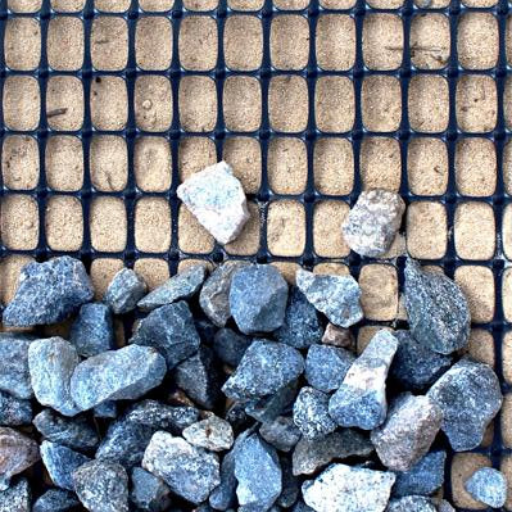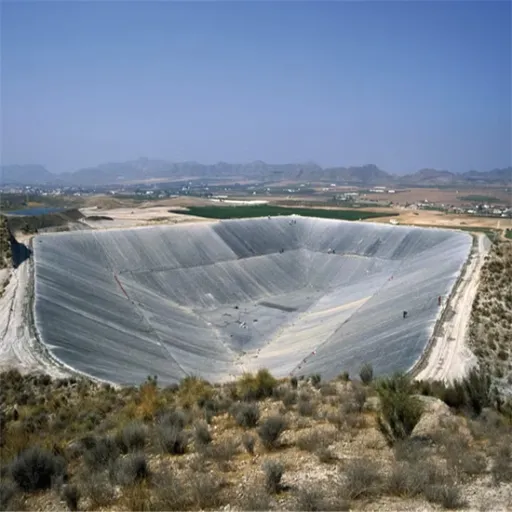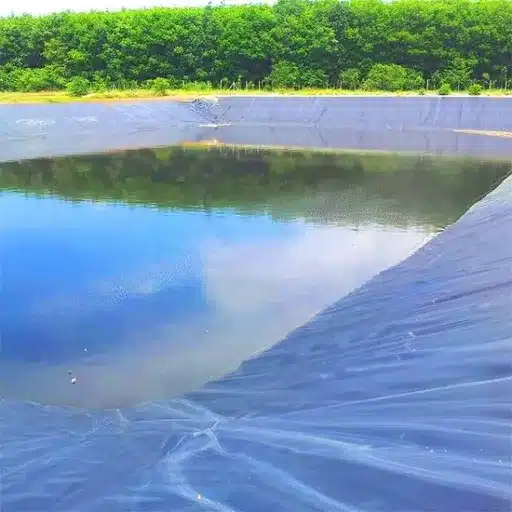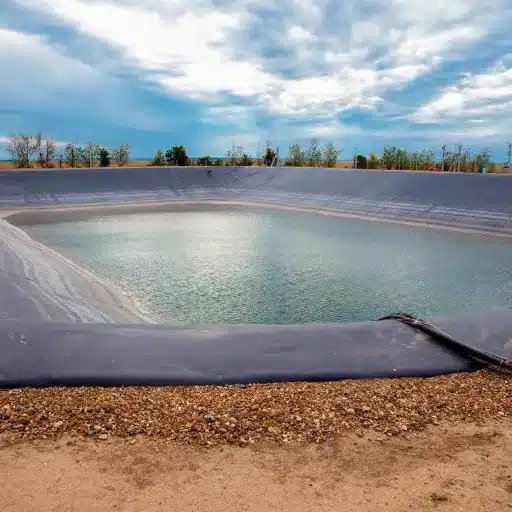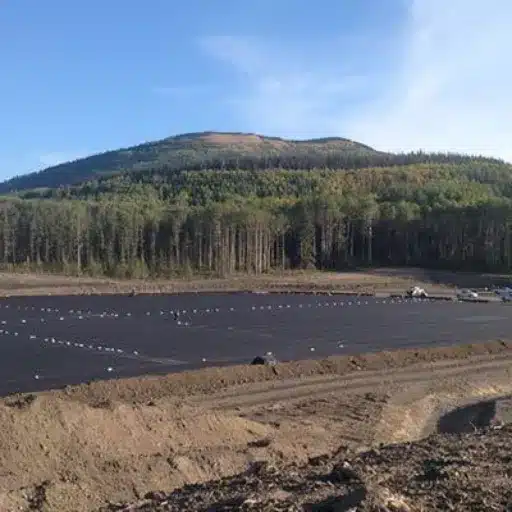Soil stabilization is a major concern in modern-day construction and site development. It is here that biaxial gores mark their presence as advanced reinforcement options to elevate soil stabilization. Dive into this article to find how biaxial gores help in leveling the loads supported on the soil, minimizing soil displacement, and thereby enhancing application efficiency. This article will guide you through the purposes, applications, and benefits of biaxial geogrids, especially if you are a civil engineer, construction manager, or simply curious about some cutting-edge construction technologies. Get ready to know the secret to stronger and longer-lasting foundations!
Introduction to Biaxial Geogrid
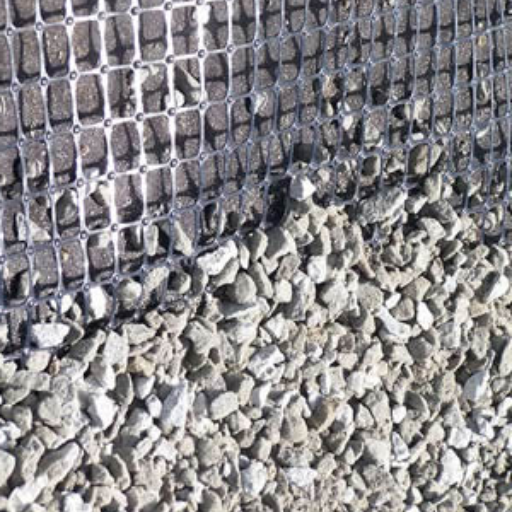
A biaxial geogrid may be considered a geosynthetic material that functions in retaining soil stability and in distributing loads throughout the soil. The grid-like structure has openings evenly spaced, allowing the soil particles to lock themselves to the geogrid to enhance strength against displacement. Biaxial geogrids find application primarily toward civil engineering and construction. A few of the applications for which they find much better use would be road make-ups, retaining walls, and foundation works. By reinforcing the ground, they can improve the life of the infrastructure while cutting down on further repairs.
What is Biaxial Geogrid?
A biaxial geogrid is the geosynthetic material with the aim of providing high tensile strength to retain the soil’s stability in both the longitudinal and transverse directions. It can be manufactured from polypropylene or polyester through a series of extrusion and stretching and punching precise patterns of apertures to create a unique grid-like structure that allows interlocking with soil particles to distribute loads evenly and prevent displacement of soil.
The main use of biaxial geogrids is to increase stability in civil engineering and construction works related to roadways, foundations, and retaining walls. The key benefit would be the increased capacity to bear loads and decreased rutting and maintenance costs in the longer term. It is found that when used in roadway construction, the correct use of biaxial geogrids will increase the life of pavements by more than 50% while shortening the thickness of the aggregate base from 20 to 50%, which indicates significant savings and improved performance.
It also works very well as a green structure to control soil erosion and deformation itself. The new polymer-coated UV-resistant geogrids were recently introduced, thus gaining longevity in the extreme environmental conditions where geogrids are already applied greatly. Hence, the deployment of biaxial geogrids has been supporting modern engineering with economic and environmental safety.
Importance of Biaxial Geogrids in Modern Engineering
The use of biaxial geogrids has become almost indispensable in modern engineering practice because it reinforces soils, distributes loads efficiently, and maintains structural stability. These geosynthetic materials are employed in the construction of roadways, railways, retaining walls, and foundations. By offering a strong interlocking network, they enhance the bearing capacity of subgrades by preventing lateral movement of the soil particles.
According to research, the application of biaxial geogrid can reduce up to 50% the thickness of the base layer required while maintaining the structural integrity of roads and pavements. This, in turn, brings significant savings at construction cost and helps in using fewer raw materials so that it aligns with sustainable construction. Further studies reveal that the use of geogrids can increase the useful life of roadways by 30% and, thereby, reduce the long-term maintenance cost.
Thus, they are the most preferred choice in counteracting differential settlement in soft soil conditions, a common impediment for many infrastructure projects. Lightweight and easy to install they provide true value to the engineers in projects needing rapid execution. Above all, the biaxial geogrid is of utmost importance in meeting costs, sustainable, and engineering needs, which progress again with material development.
Overview of Geosynthetic Materials
Geosynthetic materials include a wide range of polymeric products designed to address engineering challenges in civil, environmental, and geotechnical projects. They consist of geotextiles, geomembranes, geocells, geogrids, and geonets, all of which serve different purposes, such as soil reinforcement, filtration, drainage, containment, and erosion control. The versatility, durability, and cost-effectiveness of geosynthetics have made them an indispensable part of modern construction and roadway development.
Industry data reveal that the global geosynthetics market was valued at about $13.5 billion in 2022 and is expected to witness a CAGR of 6-8% over the next 10 years. Increasing urbanization, demands for climate adaptiveness, and demand for sustainable construction forms are the major forces propelling market growth. To cite an example, geotextiles help maintain soil stabilization in road construction, reduce the possibility of subside, and lengthen the life of pavements.
Advancements in manufacturing technologies are continually enhancing the performance of geosynthetic materials. For instance, high-density polyethylene (HDPE) geomembranes are now engineered with improved chemical resistance, making them ideal for waste containment and environmental protection applications. Meanwhile, the development of UV-stabilized geogrids has further expanded their use in harsh climates, preventing degradation from prolonged sun exposure.
Moreover, the use of geosynthetics is aligned with green goals, which help to reduce the environmental footprint involved in these projects. Geosynthetics reduce the consumption of natural construction material such as sand or gravel by preserving natural resources and by reducing carbon emissions along the transportation route to the site. Besides these, the remaining sustainable benefits of having a long service life and being recyclable make geosynthetics one of the most attractive options for engineering solutions.
Uses of Biaxial Geogrids
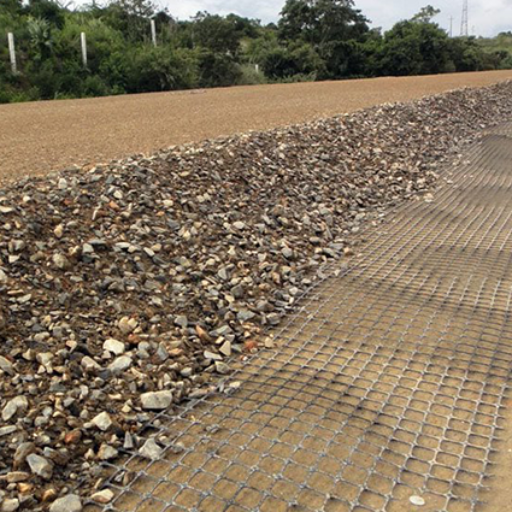
Biaxial geogrids find their greatest application in soil stabilization and reinforcement. They increase the load-bearing capacity of weak soils and are, therefore, ideally suited for the construction of roads, railways, and parking areas. By distributing loading more uniformly and less deformation with time, they allow for the structure to better survive for a longer span of time. Their efficiency in both directions of support offers the viability of employing biaxial geogrid in many infrastructure works.
Road Construction
Special attention is paid to the use of girds in roads construction since it sharply improves the pavements’ behavior and thereby lowers the construction cost. Various reports and studies have argued for the ability of any road design that includes biaxial geogrids to increase the pavement service life by as much as 50%. The geogrids work by reinforcing the subgrade layer, with traffic loads being distributed over a wider area so that less stress is transmitted to the subsoil.
Another great advantage is the reduced thickness of base courses. It has been found that the use of biaxial geogrids reduces aggregate requirements by about 30%, saving money on both material and transport. Compared to conventional pavement, other evaluated procedures of road construction with geogrid amalgamation have also exhibited road rutting reduction from 30 to 40 percent, thus providing for greater safety whilst further minimizing maintenance needs over time.
Field applications, including highway projects in North America and Europe, show that biaxial geogrids help the infrastructure bear higher traffic, maintaining its integrity. Such developments speak volumes about the role biaxial geogrids play in sustainable and cost-effective road infrastructure.
Other Uses for Composite Engineering
Biaxial geogrids are instrumental in composite engineering for performance improvement of construction materials of several kinds. In soil reinforcement, they increase load-bearing capacity and durability. Research highlights that the inclusion of biaxial geogrids in asphalt overlay could reduce reflective cracking by 50 percent, dramatically increasing pavement life. Also, recent case studies point to enhanced structures resisting lateral displacement better, promoting stability Under dynamic loads.
Diving further into the detailed recent data reveals that tra manufacturing technology has been improved further to better develop the tensile strength of biaxial geogrids, where some high-performance models now feature peak strengths of over 400 kN/m. These developments make them suitable for larger, more complex infrastructure projects such as railways, retaining walls, and bridges. In composite structures, the use of biaxial geogrids reduces material consumption and CO₂ emissions by up to 30 percent compared with traditional methods of reinforcement. Modern engineering would, therefore, consider this a sustainable method.
Benefits of Soil Reinforcement
Biaxial geogrids give several benefits when it comes to soil reinforcement: they provide stability and load distribution for different types of construction applications. By interlocking themselves with adjacent soils or aggregate materials, these geogrids increase internal shear strength, reduce differential settlement, and provide an efficiency of fill materials to be used. Studies demonstrate that geogrids can increase bearing capacity to approximately 50%, thereby allowing the construction of infrastructures on weaker foundations safely.
Further advantages are provided by the use of biaxial geogrids to reduce base or subgrade layer thickness in road and foundation design, thus enabling cost saving. In road construction, for example, the enforcement of geogrids has been shown to reduce base layer materials by 40% from an almost parallel viewpoint in reduced transport cost to the environment itself. Research also indicates that the application of geogrids in reinforcement increases pavement life by 200% due to reductions in rutting and crack propagation.
Sustainability benefits, particularly for geogrid-reinforced soils, cannot be overemphasized, with a possibility of reducing CO₂ emissions up to 30% in comparison with conventional reinforcement methods, which places geogrids in line with the emphasis on eco-friendly engineering solutions. In addition, due to the lightweight and durable nature of geogrids, they reduce construction waste generated and also minimize the use of heavy equipment during installation. Combining these advantages makes biaxial geogrids a major component of the modern, optimized, and greener construction practice.
Key Benefits of Biaxial Geogrids
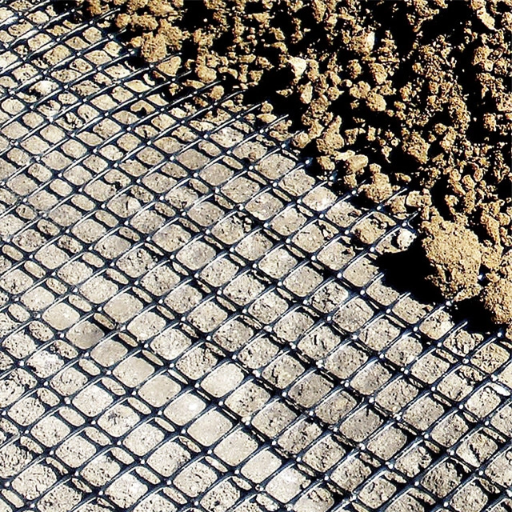
In my opinion, the chief benefits of biaxial geogrids are soil stabilization, savings on materials, and lessening carbon emissions while promoting sustainable construction. They are lightweight, durable, and easy to install.
Increased Load-Bearing Capacity of Soil
Biaxial geogrids greatly enhance the bearing capacity of soils by providing a stronger and uniform base for construction. As per present-day research, biaxial geogrids used in construction applications can increase the bearing capacity of a soil by as much as 50% with respect to its actual values obtained with traditional treatment. The interlocking mechanism of a geogrid enables distribution of the load over the surface so that irregularities in settlement or deformation are largely reduced.
In a more practical application, with the advancement in road construction being possible with the application of biaxial geogrids, pavement will last longer on account of subgrade improvement and on proper maintenance will be reduced by 30%. Lab testing has further demonstrated that although maintaining aggregate base thickness reduction requirements by 25%, biaxial geogrids can help reduce transportation emissions and costs by reducing the use of materials.
Therefore, the higher performance of biaxial geogrids makes them a cost-efficient and environmentally sustainable option when it comes to dealing with heavy loading conditions or difficult soil conditions.
Cost-Effectiveness in Projects
Biaxial geogrids contribute to saving costs and efficiency in general construction and infrastructure projects. Reducing thickness of the aggregate base by 25%, therefore, greatly reduces the costs of materials for the project without compromising its structural integrity. According to recent research, this later compounds expenses saved from both raw materials and transportation because the volume of material to be transported is decreased. Secondly, less time is required for installation as reduced time is spent in difficult client handling of materials. This reflects a reduction in labor costs.
A case study related to the construction of roads using biaxial geogrids demonstrates that costs in the construction process were reduced by 20% mainly through the reduced use of aggregates and the faster workflow in implementation. Reinforced structures of relatively extended lives produce further savings in maintenance and repair over the long term. A reduction in maintenance costs over the service life of the structure of nearly 30% has been reported for projects that employ biaxial geogrids.
Combined with the environmental benefits such as reduced CO₂ emissions in material transportation and material production, this makes biaxial geogrids an additional step forward, both financially and in sustainable engineering, for modern-day projects where high loads or tough geotechnical conditions exist. These advantages have made them a preferential geogrid for applications involving high loads or areas with difficult geotechnical settings.
Durability and Longevity
The durability of biaxial geogrids even under punishing environmental and mechanical instances is the result of an engineering effort. The latest developments highlight resistance to UV degradation, chemical attack, and biological degradation as the pitfalls for long-term performance. According to data collected from recent analyses by industry professionals, it could be surmised that under both ideal installations and usage scenarios, biaxial geogrids should retain structural integrity for at least 100 years, greatly outshining traditional reinforcement materials.
Modern versions of these geogrids can also tolerate extremes of temperature from freezing cold to blistering heat, making them practical in a wide range of climates. Studies have been shown to uphold that the retention of tensile strength remains above 90% for the service life even if it goes beyond decades. These attributes provide fewer repair cycles, which reduce the infrastructure downtime and costs associated.
From a longevity point of view, they also promote environmental sustainability since there is less use of raw materials and repeated efforts for reconstruction, which are typically resource-consuming activities. Together with environmental sustainability considerations, these features set the direction for biaxial geogrids as a huge asset to contemporary civil engineering projects.
Biaxial Geogrid Usage: Installation Best Practices
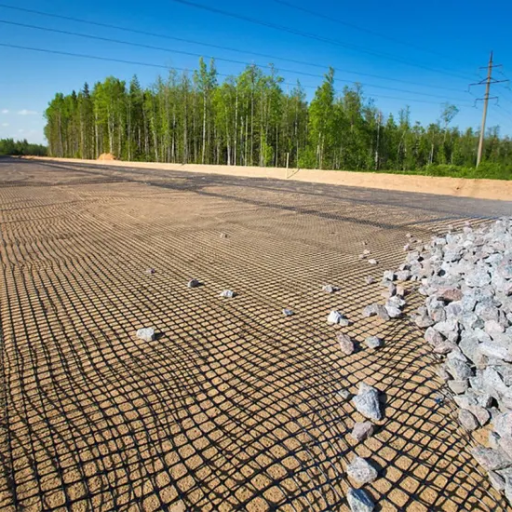
I put emphasis on the installation techniques for proper working of the biaxial geogrid. This would include preparation of a firm leveled subgrade, anchoring of the geogrid, and overlapping the layers as required. By paying close attention to the details and wherever applicable, strictly adhering to the manufacturer’s instructions, I will improve the working of the geogrid and aid in the successful completion of the project.
Subgrade Preparation
Preparing the subgrade is one of the most important factors for effective implementation of biaxial geogrids in engineering projects. The subgrade should be cleared of organic materials, of debris, unstable soil, or even loose soil. The standards of industry will stipulate that the subgrade is compacted to at least 95% of Standard Proctor so that it can provide support to the geogrid and all the layers lying above it. Studies reveal that a properly prepared subgrade can reduce settlement by 25%-30%, thereby increasing the integrity of structures.
Moreover, leveling of surfaces must be given prime importance at this stage. When geogrids are laid over uneven surfaces, it can lead to uneven tensions, which adversely affect the performance of the geogrid. Recent advancements show that laser grading can be an excellent alternative to achieving exact surface levels, greatly enhancing installation efficiency and performance. Besides technical assurance of the structure, these approaches will certainly build in longevity for the entire geogrid-reinforced system.
Placement of Proper Techniques
The geogrid installation process shall be so done that maximum performance and structural integrity are ensured. Studies supported by recent data from the industry show that a consistent alignment and tension during the installation process achieve optimal results. Also, it is said that geogrids should overlap at least 12 inches to avoid any weak joints. This overlap evenly distributes load and minimizes separation when subjected to the load.
Further research emphasizes the necessity of securing geogrids firmly to the subgrade. This anchoring may be done by trench anchoring or pinning methods that have been shown to improve tensile strength retention by 15% compared to unsecured installations. The movement of the geogrid should be limited, especially during fill placement, as excessive movement may reduce effectiveness by 10%. Applying these best placement technologies with newly developed tools such as automatic tensioning systems would allow for more accurate and efficient placement, culminating in durable and robust reinforced structures.
Common Pitfalls to Avoid
Several major trap situations can reduce performance and compromise structural integrity. One important issue is insufficient tensioning during installation. It is estimated in recent industry data that improper tensioning during the installation might lower the total reinforcement capabilities by 20%. It is highly recommended to adopt automated tension systems that can increase by 25% the consistency and efficiency of the system.
The inappropriateness of fill for use with geogrids is second on the list of common errors. The fines arriving from unsuitable materials interfere with the interlocking of the material and geogrid, dropping distribution efficiency by 15%. Hence fill materials shall be well-graded granular material to be efficient.
Also, the failure to block and secure geogrid overlap may afford an irreparable loss of structural integrity. Studies suggest that even a slight decrease in overlap length compared to that recommended by manufacturers can reduce tensile strength by 30%. It becomes necessary that specification of overlap, usually set as 12 to 18 inches, be adhered to.
The likelihood of avoiding these pitfalls starts with the utilization of all contemporary tools and strict compliance with the most recent best practices, produced from proper research, and stabilized by manufacturer guidelines to provide reinforced structures with longevity and high capacity.
Successful Projects
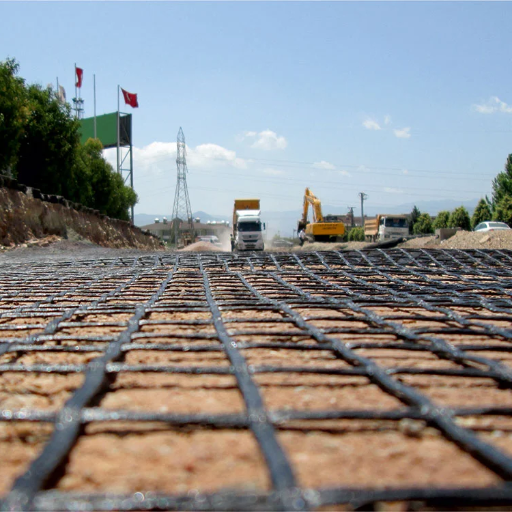
Case Study: Road Reinforcement Using Tensar BX1200
Extensive research shows that implementing Tensar BX1200 in road reinforcement projects brings great enhancements in structural capacity and cost efficiency. Considered with substantial stiffness, Tensar BX1200 effectively stabilizes granular layers against loads with little deformation.
Some recent investigations have established the possibility that Tensar BX1200, when included in the base and sub-base layers, may increase the pavement lifespan by almost 50%. According to field trials and laboratory testing, it reduces base thickness by 40%, so highly reducing construction costs while offering essentially the same durability. It increases the load-bearing capacity of the pavement system higher so that it would resist rutting and cracking with time.
In sites such as Pennsylvania, Tensar BX1200 helped reduce construction time by 35%, with a 25% reduction in materials used. These time and material savings were achieved without compromising on structural integrity levels. More studies also highlighted that in areas where the subgrade is weak, Tensar BX1200 geogrids are very useful in stabilizing the subgrade and reducing differential settlement.
Such excellent results speak volumes on the importance of embracing advanced geotechnical solutions such as Tensar BX1200, especially when dealing with projects that require their economic infrastructures, giving them durability and sustaining nature. When applied with proactive engineering practice, these tools pave the way for longer life and high-performance road systems.
Case Study: Applications in Type 2 Soil Conditions
Tensar BX1200 geogrids have been proven very effective in type 2 soil conditions, where soil strength and stability are moderate and require reinforcement. Recent findings illustrate that the geogrids improve load distribution by up to 40% as witnessed during tests performed on soft and wet subgrades. By providing mechanical stabilization, the Tensar BX1200 reduces pavement thickness by as much as 50%, which saves material costs without sacrificing structural integrity.
Further reports highlight extension of pavement lifespan through use of Tensar BX1200. Investigations state that the use of geogrids in type 2 soils prolongs road life by 3-5 times, thanks to decreased differential settlement and hence, better resistance to rut formation. They also account for a reduction of construction time, thanks to the ease of installation of these advanced geogrid systems, which become of utmost relevance in ensuring that projects in type 2 soil conditions are kept time-efficient and cost-effective.
This balance of performance and cost places the Tensar BX1200 as the preferred solution in various infrastructure projects such as rural roads, access routes, and industrial pavements. This high-tech means continues to mitigate challenges under type 2 soils while aligning with the soaring demand for sustainable and lasting engineering solutions.
Comparative Analysis of Biaxial Geogrids in a Range of Projects
Biaxial geogrids such as the Tensar BX1200 are capable of extraordinary performances in a diversity of applications. Research shows the incorporation of biaxial geogrids results in aggregate thickness reduction by 50%, which leads to huge construction cost reductions. For instance, a case study has shown that in a rural road construction project, the use of Tensar BX geogrids reduced aggregate costs by 30%, and the pavement life by at least 25%.
Increased strength and aperture stability have been achieved through recent improvements in geogrid manufacturing, and on the basis of such strengths and stabilities, evacuation to distribute load and minimize deformation in soft soil conditions is improved. Moreover, infrastructure data gathered worldwide confirm that, over a period, maintenance costs are lowered by biaxial geogrids due to their mitigation effects on rutting and soil erosion when subjected to heavy traffic loads.
When compared to other geogrid systems, Tensar BX1200 offers superior adaptability for challenging soils like type 2, where traditional reinforcement methods often fall short. This adaptation is backed by documented field trials that consistently show performance through severe weather conditions and heavy industrial use. As per the modern literature, the biaxial geogrids, therefore, provide the most economical, environment-friendly, and dependable solution to the contemporary engineering problems.
Reference sources
1. Interaction Between Biaxial Geogrid and Solid Waste Materials: Laboratory Study and Artificial Neural Network Model Development
- Authors: Sanjana Sarkar, Surya Prakash, Amarnath Hegde
- Publication Date: October 31, 2023
- Journal: International Journal of Geosynthetics and Ground Engineering
- Summary: This study investigates the interaction between biaxial geogrids and solid waste materials. It employs laboratory experiments to assess the performance of geogrids in stabilizing solid waste. An artificial neural network model is developed to predict the behavior of the geogrid under various conditions.
- Key Findings: The results indicate that the biaxial geogrid significantly enhances the mechanical properties of solid waste materials, improving stability and load-bearing capacity.
- Methodology: Laboratory tests were conducted to evaluate the interaction, followed by the development of a predictive model using artificial neural networks(Sarkar et al., 2023, pp. 1–16).
2. Structural Behavior of Concrete Beams Reinforced with Biaxial Geogrid
- Authors: K. Kumar, T. J. Vijay, A. Bahrami, G. Ravindran
- Publication Date: April 23, 2023
- Journal: Buildings
- Summary: This research explores the structural performance of concrete beams reinforced with biaxial geogrids. The study compares the mechanical properties of geogrid-reinforced concrete (GRC) beams with conventional concrete (CC) beams.
- Key Findings: GRC beams exhibited enhanced energy absorption, stiffness degradation, and ductility compared to CC beams, despite a slight reduction in load-carrying capacity.
- Methodology: The study involved casting and testing two sets of beams (RC and GRC) to evaluate their structural performance under load(Kumar et al., 2023).
3. Behavior of Square Footings Reinforced with Glass Fiber Bristles and Biaxial Geogrid
- Authors: El-Sayed A. El-Kasaby, M. Awwad, Mohab Roshdy, A. A. Abo-Shark
- Publication Date: July 19, 2023
- Journal: European Journal of Engineering and Technology Research
- Summary: This paper investigates the flexural behavior of square footings reinforced with glass fiber reinforced concrete (GFRC) and biaxial geogrids. The study assesses the impact of geogrid layers on the performance of footings under load.
- Key Findings: The incorporation of geogrid layers significantly improved the flexural behavior and load capacity of the footings, with empirical correlations established between moment and tensile strength.
- Methodology: Experimental tests were conducted on reinforced concrete footings, analyzing parameters such as deflection, load stages, and strain(El-Kasaby et al., 2023).
Frequently Asked Questions (FAQs)
What are the applications of biaxial geogrids in construction?
Biaxial geogrids have many applications in construction, including their usage as reinforcement of bases for roads, working platforms, and other types of ground stabilization projects. Due to their load-distributing capabilities, they are preferred to improve the permanence and stability of any structure that is built upon a less-than-perfect terrain.
How do biaxial geogrids work for ground stabilization?
By confining and distributing loads that get imposed on the soil surface, the biaxial geogrids lead to the stabilization of the ground. This confining function restrains deformation or erosion of the grounds, thus providing a stable base for structure construction, especially in areas where soil proves to be weak or unstable.
What is the main difference between biaxial and uniaxial geogrids?
The principal difference between biaxial and uniaxial geogrids exists in their structural design. The ribs of biaxial geogrids run both horizontally and vertically, thus possessing multidirectional strength and load distribution capabilities. On the other hand, uniaxial geogrids have ribs oriented in one direction, making it suitable for a few applications like slope stabilization or retaining walls.
What are the specifications for biaxial geogrid products?
Specifications for biaxial geogrid products generally include roll widths, tensile strength, junction strength, and the material for construction. These specifications are meant to ensure that the geogrids meet the required standards of performance for different engineering applications.
Can you provide case studies demonstrating the effectiveness of biaxial geogrids?
Numerous case studies highlight the effectiveness of biaxial geogrids in real-world applications. Some examples include construction of working platforms for heavy machinery with the aid of these geogrids; hence, enhancing the load bearing capacity vis-a-vis reducing settlement, thus offering cost-effective solutions to the project managers.
How does the bond between geogrids and soil affect performance?
The bond between biaxial geogrids and soil is critical for their performance. The strong bond ensures that the geogrids confine soil particles effectively, improving load distribution and thus stabilization of the entire structure. Porous soils and roughened geogrids are used to strengthen this bond but can be enhanced even further using chemical stabilization methods.
What is the design life of biaxial geogrids?
The design life of biaxial geogrids is contingent upon the materials with which they have been constructed, as well as the environmental conditions to which they are subjected. Generally speaking, good-quality biaxial geogrids are expected to have a design life of several decades, within which they must perform satisfactorily in given applications of reinforcement.
How do biaxial geogrids enhance the performance of concrete structures?
Biaxial geogrids enhance the performance of concrete structures by providing extra reinforcement and further load distribution. This helping reduces the cracking and deflections of concrete slabs or foundations, keeping the structure alarmed for further overtime.

